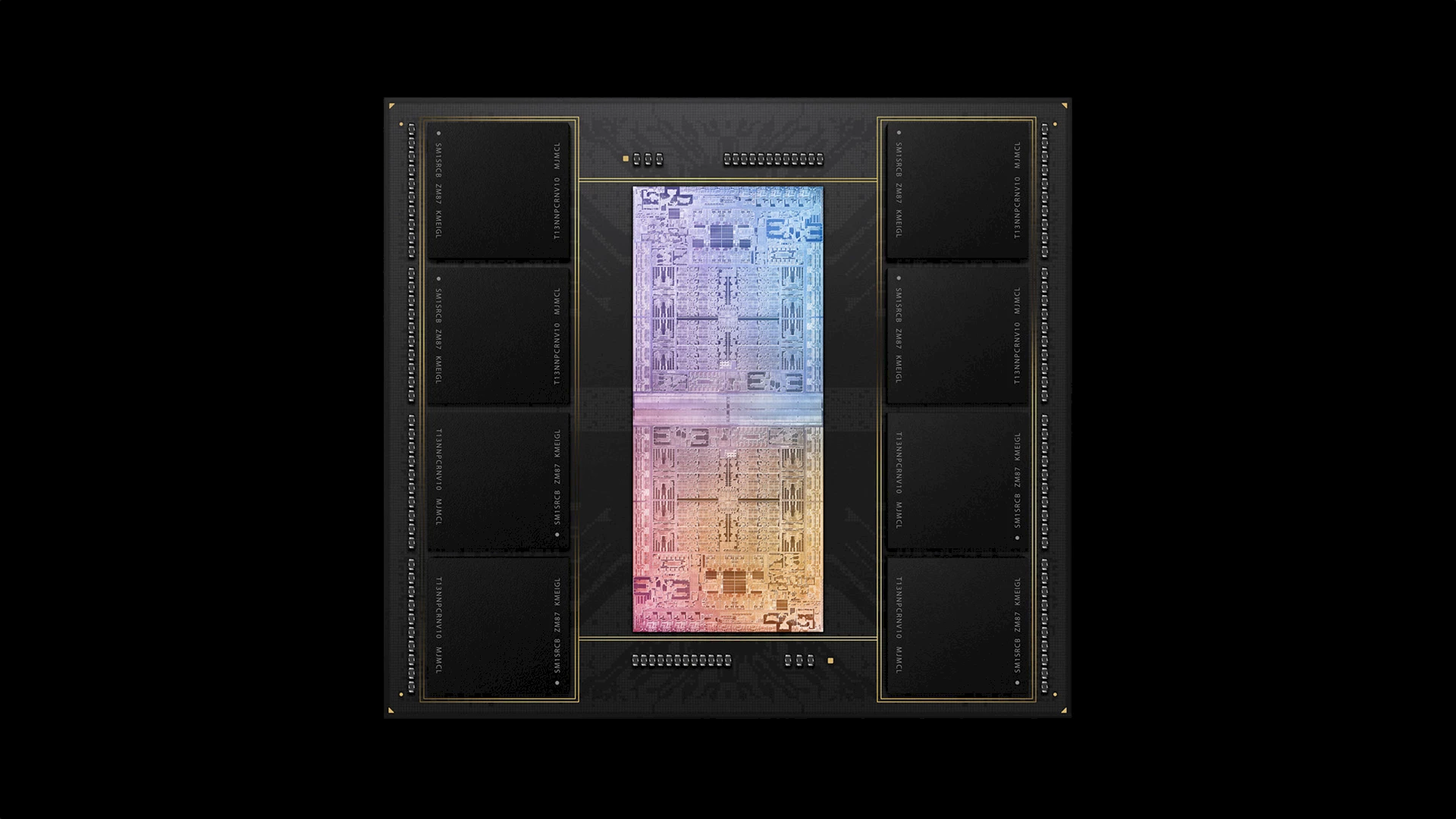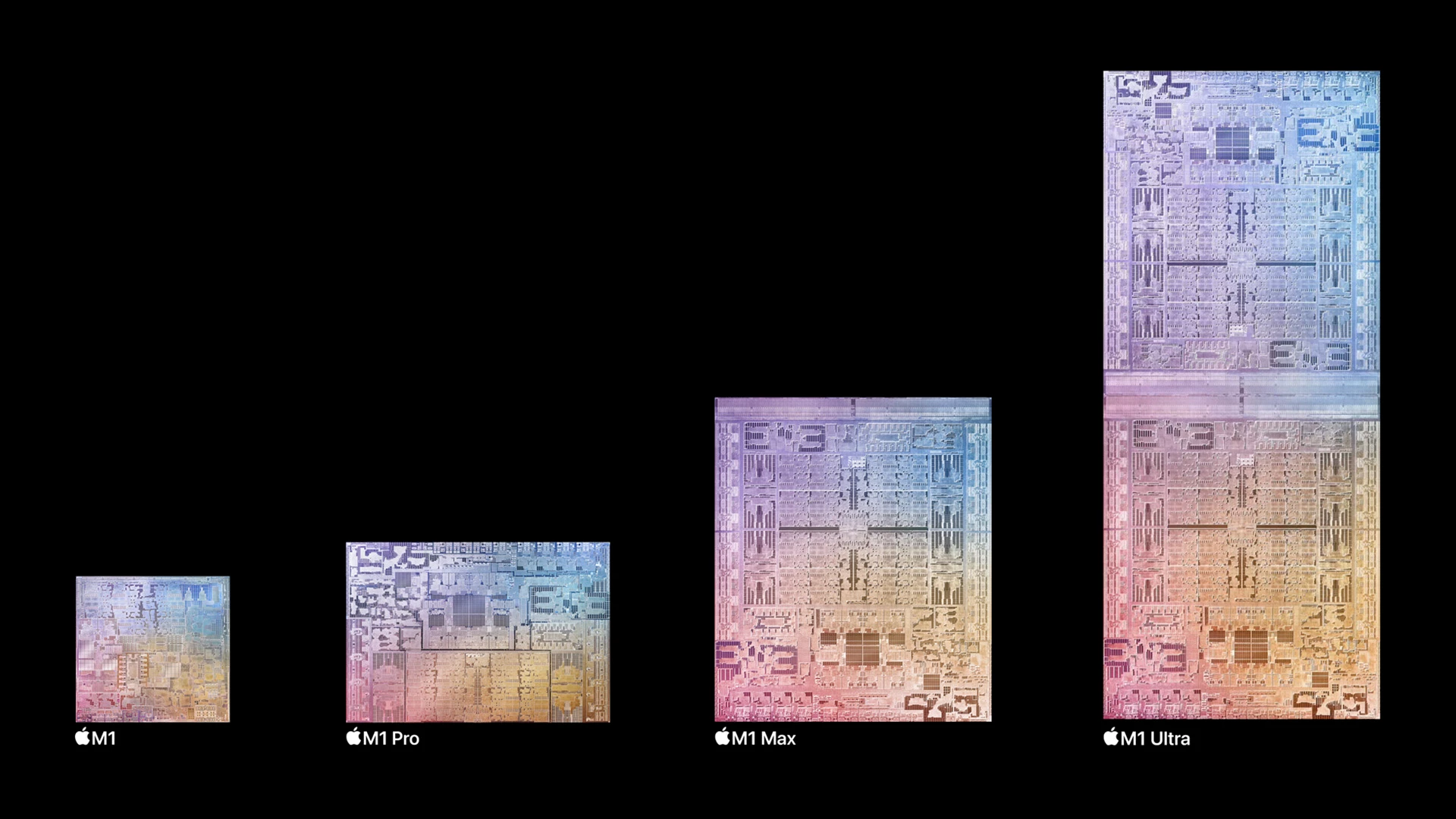Apple’s M1 Ultra architecture

Apple M1. © Apple.
Apple announced a new M1 Ultra SoC (system on chip), the latest in Apple’s M1 chip series, which is more powerful yet than the M1, M1 Pro and M1 Max chips. Mac Studio, Apple’s new high-end desktop model, will come equipped with this SoC. The innovation comes from fusing two M1 Max processors on the same silicium, linked using an inter-processor bridge (an “interposer”) with 2.5TB/s of bandwidth. This architecture, which Apple dubbed UltraFusion, isn’t far off from the chiplets technology we wrote about recently when Intel revealed the Ponte Vecchio processor. This design means that Apple can virtually double all the specs from its M1 Max chip with 20 CPU cores (16 for performance and 4 for efficiency), 64 GPU cores, a 32-core Neural Engine for AI processing and up to 128GB of RAM. All told, Apple alleges that M1 Ultra delivers an eight-fold performance increase over the regular M1 launched in November 2020 that powered the new MacBook Air, MacBook Pro 13-inch and Mac Mini. The new SoC is made of 114 billion transistors, the most ever in a personal-computer chip. We impatiently await the first independent benchmarks to find out what this new chip is capable of. It certainly looks good on paper.

M1 chip family lineup. © Apple.

New Mac Studio and Studio Display 5K. © Apple.
⇨ Apple Newroom, “Apple unveils M1 Ultra, the world’s most powerful chip for a personal computer.”
⇨ AnandTech, Ryan Smith, “Apple announces M1 Ultra: combining two M1 Maxes for workstation performance.”
⇨ YouTube, “Apple Studio Mac event in 11 minutes”
2022-03-08
